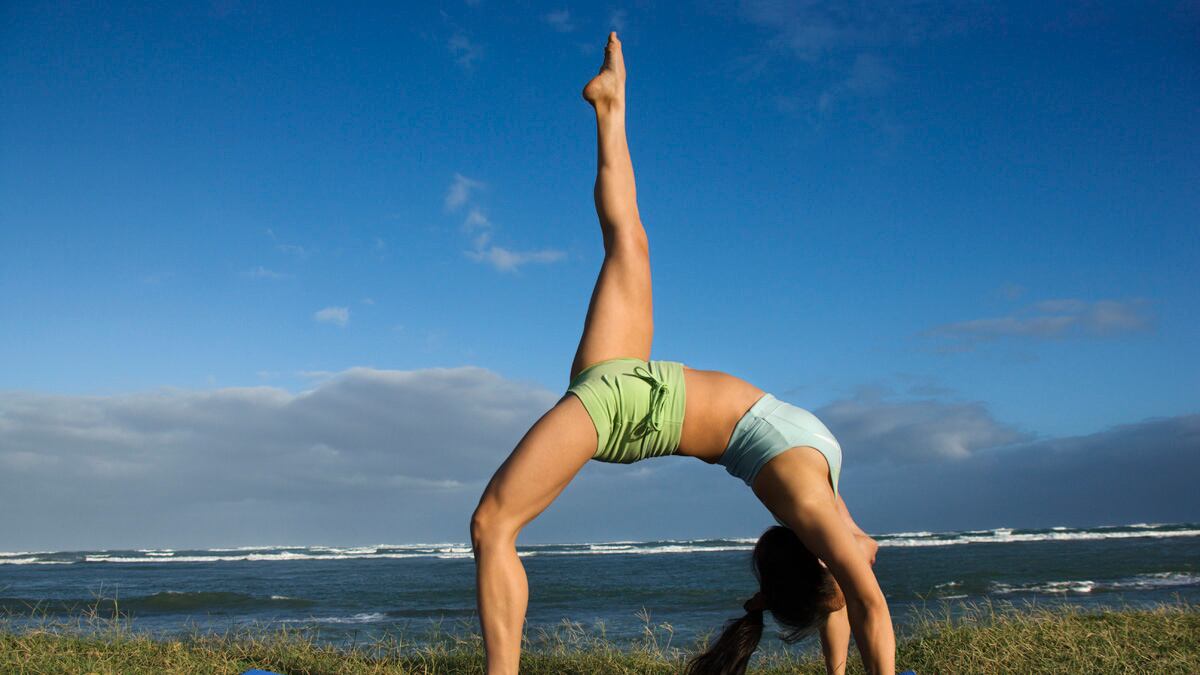The yoga instructor was barely through the door before she started in on her carefully considered remarks.
“I’m sure that many of you have seen the article in The New York Times,” she told her assembled students Friday afternoon at a popular yoga studio in midtown Manhattan, sounding as calm as could be. “I think it serves as a really nice reminder that we always have to be aware of finding our balance.”
The article in question, “How Yoga Can Wreck Your Body,” is an excerpt from the journalist William Broad’s upcoming book. The piece went online Thursday and has been topping the Times’s most-emailed list since.
It’s easy to understand why. Broad documents an astounding variety of injuries that can come from practicing yoga: hip injuries so severe they necessitate hip replacements; torn ligaments, nerve damage, spinal injuries. And it gets worse. Broad cites examples of brain damage caused by yoga—one 28-year-old woman suffered a stroke after bending her neck too far backward during the full-wheel pose.
After Friday’s class, in the privacy of the women’s locker room, the instructor’s Zen front crumbled. The gloves came off.
She felt the piece was “unnecessarily negative.” She also didn’t understand why yoga was being singled out: “Where are the articles telling me that if I run 100 miles I can hurt myself?”

And what was with the illustrations? The Times, in a goofy flourish, had photographed cast members from the Broadway musical Godspell in various yoga positions, to which the actors had added their own clownish spins, turning their necks to show off a campy wince for the camera—and demonstrating just the kind of inexact alignment likely to produce serious injury.
Yoga, which is now practiced by roughly 20 million Americans, has become a universe unto itself.
And, in the wake of the Times piece, the yoga universe is roiled. It’s wobbling in its headstand.
“This article, in every class I walk into, is like an elephant in the room,” said Adam Vitolo, a yoga instructor at the Iyengar Yoga Institute of New York and at Pure Yoga Studio.
Since the article was published, Vitolo, who said he’s never witnessed the extreme injuries described in the Times, has taken to bringing it up before the start of every class so that he and his students “can have a conversation about it.”
“To write a piece that goes into such depth with anatomy, it can only instill fear: ‘Look, here’s all these big words, telling me I’m going to hurt my neck,’” he said. “That’s what’s unfortunate—students are going to start connecting their yoga practice to fear, and that’s not the mental state that’s conducive to yoga anyway. Nothing good comes from fear.”
Lisa Jacobson, an instructor in New York at The Shala, had her own problems with the way the Times represented yoga.
“First of all,” she said, “it’s talking about yoga like it’s another sport fad. It’s not just another thing. It’s not just another Pilates. It’s meant to be so much deeper than that.”
Jacobson repeated words of advice about the article that her own instructor, Kelly Morris, gave a yoga class over the weekend. If you are a master skier, Morris told her students, and you fall down and get injured, you don’t get angry at the mountain.
Everyone can benefit from yoga, Vitolo said, adding that he’s concerned the Times story will unnecessarily drive away students from the practice. Especially because, at the very beginning of the article, a yoga instructor is quoted as saying “the vast majority of people” should not be doing yoga. Vitolo emphasizes the opposite message. When done correctly, he repeated, “yoga is for everyone.”
Jacobson expressed skepticism that a dramatic injury of the kind described in the Times could befall a student without warning.
“There have to have been some subtle signs before this major thing happens,” she said. “You’re supposed to listen to yourself and see if it’s actually safe for you, before you come up into a pose like the full wheel.”
Geralyn Coopersmith, the director of Equinox’s fitness-training institute, was much more enthusiastic about the Times’s reporting.
“I think it’s a really fair article,” she said. “People go into yoga and they think, ‘Well, it’s safe, because it’s yoga.’ But people need to think about, ‘Is this right for me?’”
Coopersmith said many of the risks of yoga can be minimized by simply avoiding certain postures—particularly the inversions, such as the headstand and plow pose, which can stress the neck.
Of course, “there’s risk involved when you do anything physical,” she said. But she was quick to add:
“P.S. There’s a lot more risk when you don’t do anything physical.”






